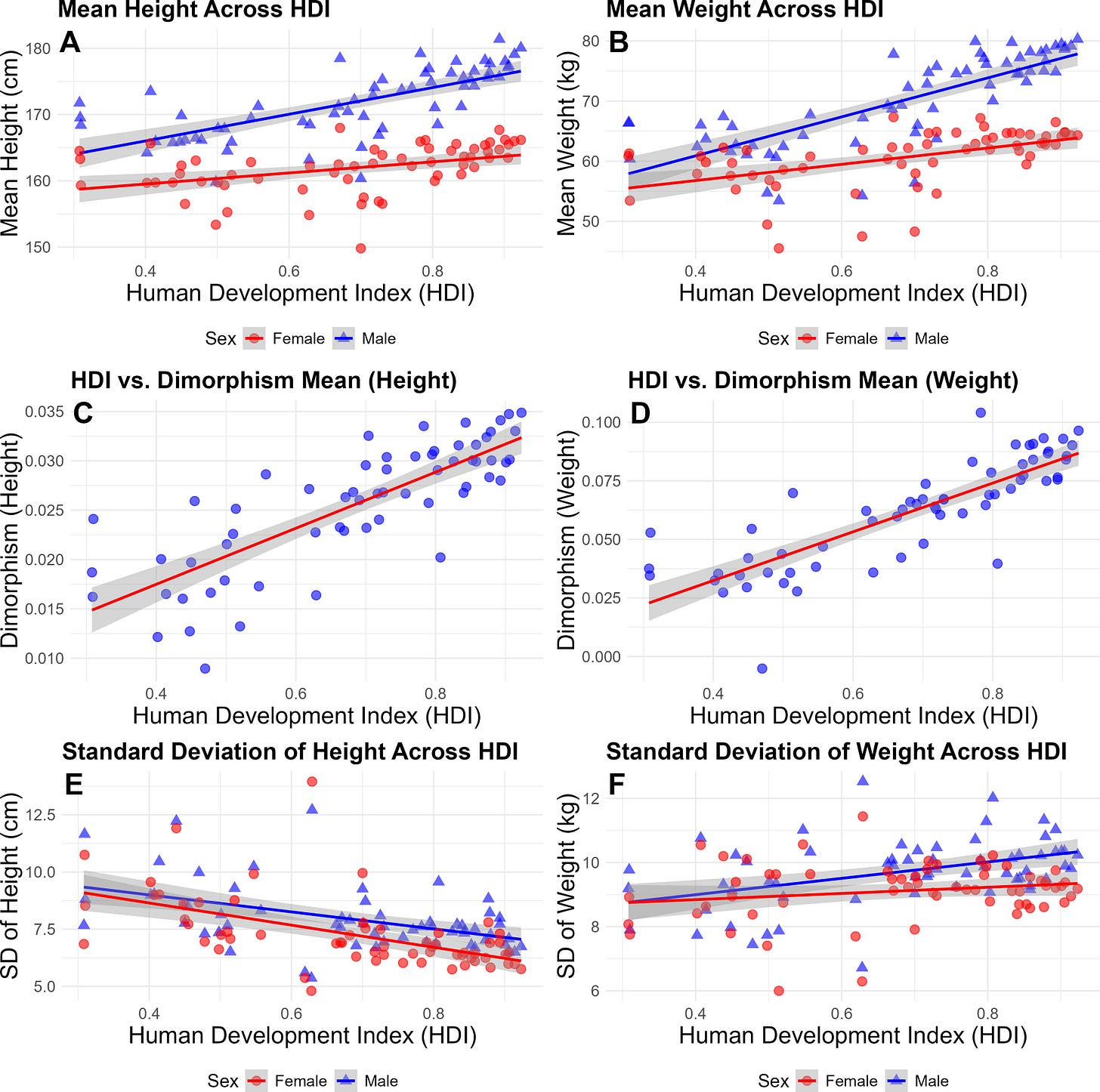Over the last century, the global stage has witnessed dramatic shifts in human health, nutrition, and socio-economic development. But how have these changes reshaped our very bodies? A new study led by David Giofrè and colleagues, published in Biology Letters, sheds light on an evolutionary phenomenon that links male physical growth to environmental improvements. Using data from 62 countries and spanning over a century, the study reveals that men’s height and weight have increased at a rate more than double that of women, intensifying the physical differences between the sexes.
This research combines evolutionary theory with socio-ecological measures, offering a fresh perspective on how sexual selection and environmental conditions influence human morphology. The findings have profound implications for understanding gendered vulnerabilities, population health, and even human mating dynamics.
“Our results show that men’s height and weight are particularly sensitive to improvements in living conditions, reflecting their evolutionary role as sexually selected traits,” the authors explain.
Sexual size dimorphism (SSD)—the physical differences in size between males and females—is a common feature across many species, including humans. Historically, larger male size has provided advantages in both mate competition and female selection, favoring traits like height and muscularity. However, these traits come at a cost: they require greater energy and are more vulnerable to disruptions caused by poor environmental conditions.

The study leverages datasets from the World Health Organization and historical UK records to test how socio-economic improvements influence SSD. It focuses on the Human Development Index (HDI)—a composite measure of life expectancy, education, and income—as a proxy for environmental quality. The results are striking. In high-HDI countries, men gained an average of 4.03 cm in height and 6.48 kg in weight for every 0.2 increase in HDI, compared to just 1.68 cm and 2.7 kg for women.
Men’s growth appears to be disproportionately influenced by environmental conditions, a finding consistent with evolutionary theories. During development, male bodies are more vulnerable to stressors like malnutrition and disease, which can stunt growth. Conversely, in favorable conditions, they grow significantly larger, fulfilling their evolutionary potential. This sensitivity makes male height and weight effective indicators of population health.
“The male body’s developmental plasticity serves as a barometer for environmental stress, revealing how much improvement can be achieved under optimal conditions,” the study notes.
The study also examines historical height records from the UK, revealing that sexual dimorphism in height increased significantly between 1900 and 1958, a period marked by improved nutrition and public health. By mid-century, the average man had grown 4% taller, while women gained only 1.9%. This widening gap reflects a deeper evolutionary logic: male physical traits are not just influenced by competition but also by female preferences for taller and more muscular partners.
“Women’s preferences for taller, well-built men likely amplify the effects of environmental improvements, creating a feedback loop that enhances sexual dimorphism,” the researchers suggest.
Despite its robust findings, the study raises questions about the broader implications of sexual dimorphism. While larger male size may confer advantages in terms of reproduction and social dominance, it also comes with vulnerabilities. Taller individuals are at greater risk for certain cancers and cardiovascular issues, potentially offsetting their perceived benefits.
The study’s reliance on HDI as a measure of environmental quality also warrants scrutiny. While HDI captures broad socio-economic trends, it does not account for within-country disparities or cultural differences in diet and health practices. Future research could incorporate more granular data to explore these nuances.
“The interplay between biology, environment, and culture is complex, and unraveling these threads will require interdisciplinary collaboration,” the authors acknowledge.
Giofrè and colleagues have provided a compelling look at how human bodies respond to changing environments. By linking improvements in living conditions to greater sexual dimorphism, their research underscores the power of evolutionary forces in shaping our physical forms. It reminds us that our bodies are not static but dynamic, constantly adapting to the world around us.
As societies continue to evolve, the implications of this study extend beyond biology. They touch on questions of equity, health, and the ways we define human potential. Ultimately, the findings invite us to reflect on how far we’ve come—and how our environments continue to shape who we are.
-
“Sexual Dimorphism in Human Evolution”
Explores the evolutionary roots of size differences between the sexes.
Read more -
“Nutrition and Growth Across Generations”
Investigates how diet influences height and weight trends.
Read more -
“Health and Height as Biomarkers”
Examines the link between population health and physical growth.
Read more


